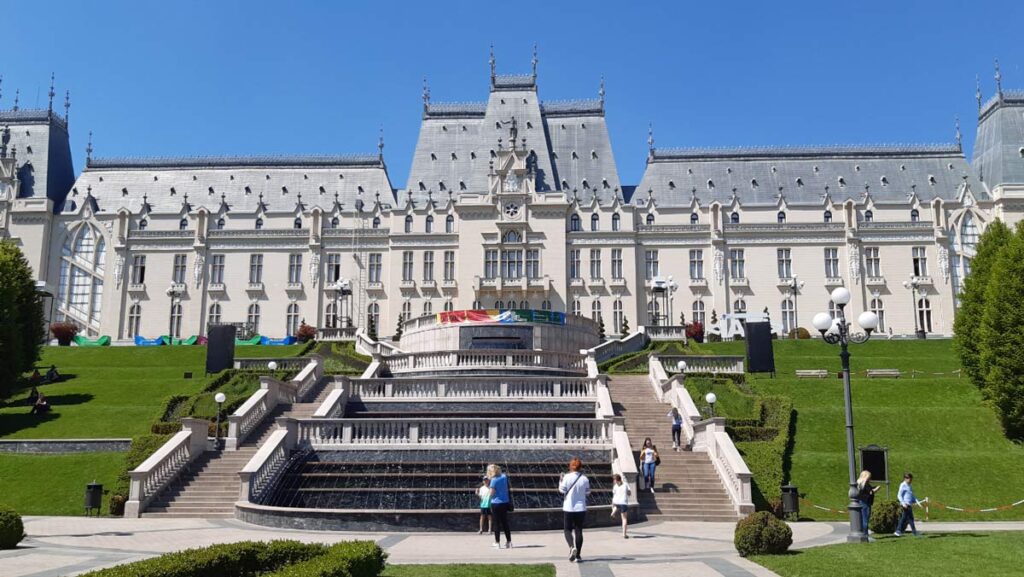Introduction
Nestled in the heart of Eastern Europe, Romania is a treasure trove for travelers seeking diverse experiences. This fascinating country offers breathtaking natural landscapes, charming medieval cities, awe-inspiring castles, and vibrant cultural traditions. From the snow-capped peaks of the Carpathian Mountains to the serene waters of the Danube Delta, Romania brims with adventure opportunities for nature enthusiasts, history buffs, and even urban explorers.
Romania is perhaps most famous for its links to the legend of Dracula, but its attractions extend far beyond Gothic lore. Whether you’re winding through cobblestoned streets that echo tales of the past, journeying along scenic drives like the famous Transfăgărășan Highway, or relaxing on pristine Black Sea beaches, this country offers experiences that are as diverse as they are unique. The hospitable locals and hearty cuisine enhance every visit, making Romania a must-visit destination for anyone with a taste for discovery.
This article spotlights 21 unforgettable things to do in Romania, including its hidden gems and iconic landmarks. Whether you’re planning the trip of a lifetime or simply looking to explore a lesser-known European country, Romania is sure to surprise and delight. Ready to dive in? Here’s how you can make the most out of your Romanian adventure.
1. Explore Bucharest
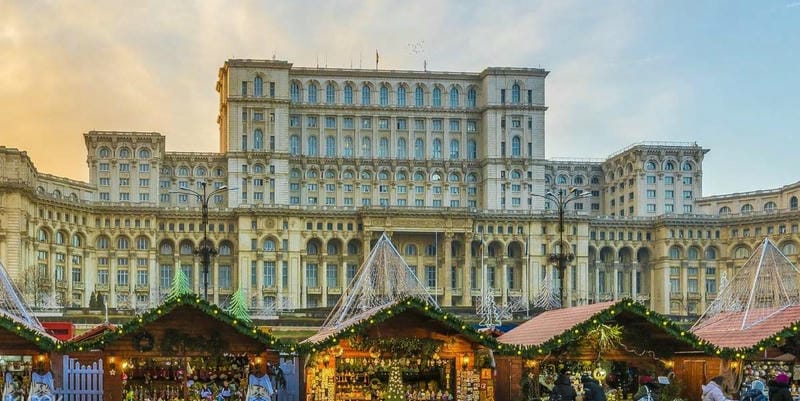
Often referred to as the “Paris of the East,” Bucharest is a city where history and modernity exist in perfect harmony. Romania’s capital is known for its eclectic architecture, vibrant nightlife, and rich cultural offerings. It’s an excellent starting point to get acquainted with the country’s blend of old and new.
Begin your visit at the Palace of Parliament, one of the most iconic landmarks in Bucharest. This colossal building, commissioned during the communist era by Nicolae Ceaușescu, is a masterpiece of architecture and also the second-largest administrative building in the world. Guided tours allow you to explore its opulent interiors, filled with marble, gold, and intricate details.
Take a leisurely walk through the Old Town, the heart of Bucharest’s historical quarter. The cobblestone streets are lined with vibrant cafes, bars, and boutiques, making it a favorite spot for both tourists and locals. Don’t miss the historical landmarks in the area, such as Stavropoleos Monastery and Lipscani Street, where tradition and modernity meet seamlessly.
Another must-visit is the Village Museum, an open-air showcase of Romania’s rural heritage. Nestled in Herăstrău Park, this museum features traditional houses, windmills, and churches that represent different regions of Romania, offering visitors a glimpse into the country’s rich folk culture.
2. Experience Dracula’s Castle: Bran Castle
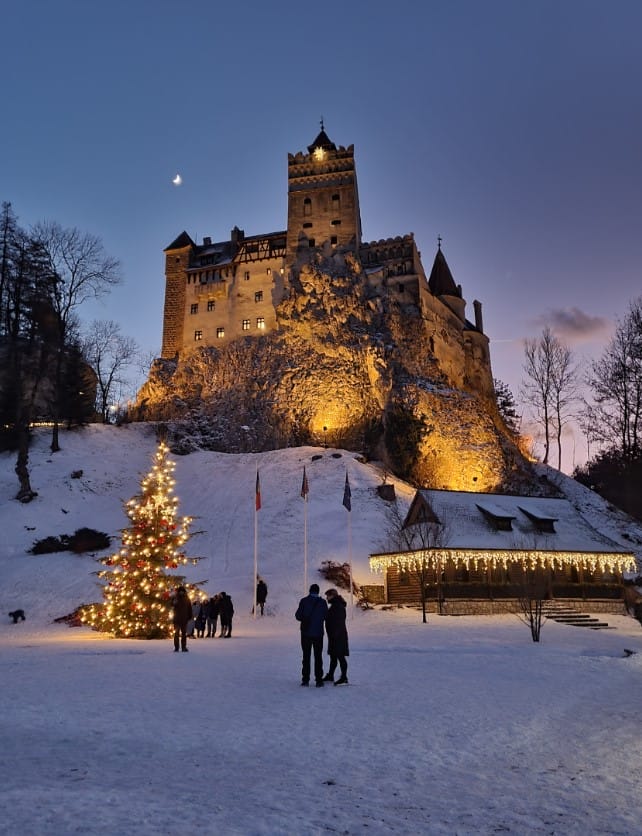
A visit to Bran Castle, often referred to as Dracula’s Castle, is one of the most popular attractions in Romania, steeped in both history and legend. Perched atop a hill in the Carpathian Mountains, this majestic castle is encased in mystery due to its association with Bram Stoker’s fictional vampire, Count Dracula.
While there’s no evidence that Stoker’s Dracula was directly inspired by Bran Castle, the location certainly fits his descriptions of Dracula’s eerie fortress. The castle’s Gothic architecture adds to its sinister allure, featuring stone towers, narrow stairways, and hidden passageways.
History enthusiasts will also enjoy exploring the castle’s museum, which offers insights into the Romanian royal family and medieval history. Visitors can learn about Queen Marie of Romania, who transformed the castle into a royal residence during the 20th century.
Though Bram Stoker’s Dracula may be fictional, Bran Castle’s imposing structure and striking mountain backdrop create an undeniably magical atmosphere that fascinates all who visit.
3. Marvel at Peleș Castle
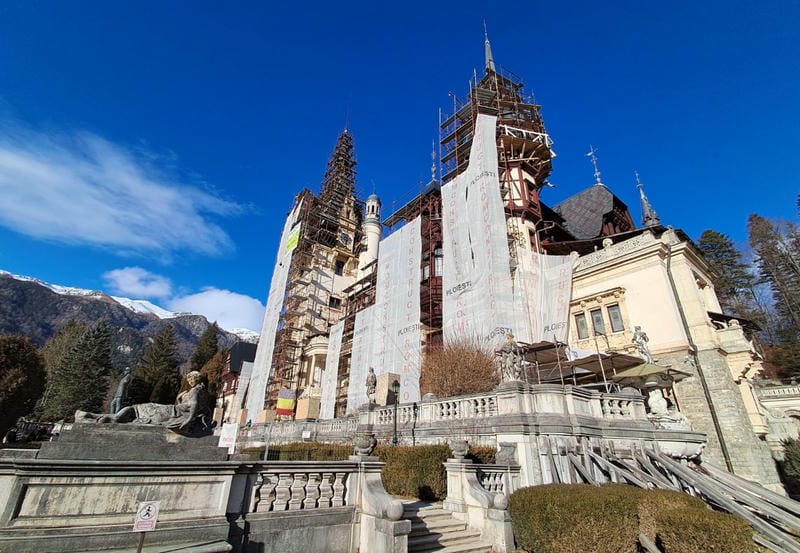
If Bran Castle is mysterious and Gothic, Peleș Castle is its elegant counterpart, exuding charm and grace. Located in Sinaia, this stunning Neo-Renaissance castle is nestled at the foot of the Bucegi Mountains, offering a picture-perfect setting.
Built between 1873 and 1914, Peleș Castle was the summer residence of Romania’s royal family and is considered one of the most beautiful castles in Europe. It boasts elaborate woodwork, colorful stained glass windows, and intricate frescoes, making every visit feel like a step into a fairytale.
The tour of the castle reveals luxurious interiors, including the Hall of Arms, decorated with suits of armor and weaponry, and the Honorary Hall, adorned with exquisite carvings and paintings. The castle’s library, complete with a secret door, is also a highlight.
Peleș Castle isn’t just a feast for the eyes—it also offers a lesson in Romanian history and monarchy. Don’t forget to explore the surrounding gardens and pathways, where the sound of rushing streams accompanies the alpine beauty.
4. Drive the Transfăgărășan Highway
Regarded as one of the most beautiful roads in the world, the Transfăgărășan Highway is a thrill for adventurers and road trip enthusiasts. This winding, high-altitude route slices through the Făgăraș Mountains—the tallest range in the Carpathians—and treats visitors to jaw-dropping views of rugged peaks and forested valleys.
The highway stretches for 90 kilometers (56 miles) and reaches a maximum altitude of 2,042 meters at the Bâlea Lake, a glacial lake that perfectly reflects the surrounding scenery. Along the way, you’ll encounter thrilling hairpin turns, tunnels, and cascading waterfalls, making for an unforgettable driving experience.
The best time to drive the Transfăgărășan is between late June and October when the road is open and free of snow. The journey is just as enriching for photographers and nature lovers, as panoramic viewpoints and scenic stops abound.
For those who enjoy hiking, there are marked trails along the route, giving you the chance to experience the beauty of the Făgăraș Mountains up close. The sheer scale and grandeur of the landscape make the Transfăgărășan a must-see attraction for anyone visiting Romania.
5. Discover Sibiu’s Old Town
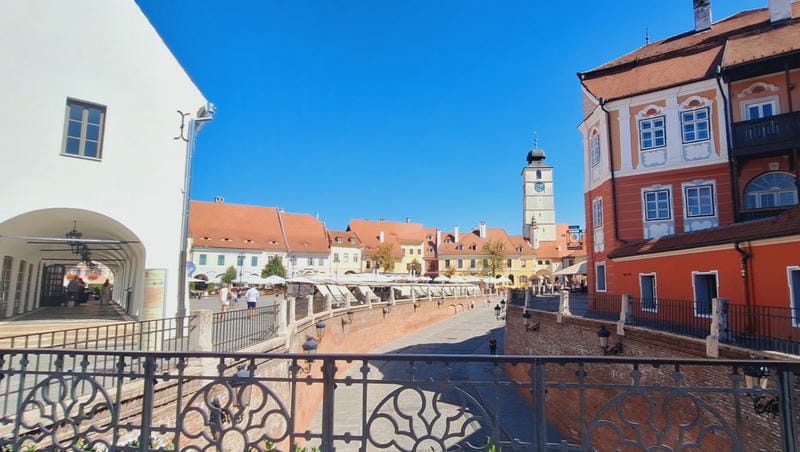
With its cobblestoned streets and vibrant pastel-colored buildings, Sibiu is one of Romania’s most enchanting cities. Located in the heart of Transylvania, Sibiu’s Old Town is steeped in history and culture, offering a mix of medieval charm and modern vibrancy.
The city is best known for its unique architecture—a standout feature being the “eyes” of Sibiu. These are small, eyebrow-like windows on the rooftops of houses that seem to gaze at you as you roam the streets. This quirk, combined with the city’s pedestrian-friendly layout, makes exploring Sibiu an enchanting experience.
One of the highlights of the Old Town is the Great Square (Piața Mare), a spacious plaza lined with cafes, historical landmarks, and museums. The nearby Council Tower offers panoramic views of the city, while the Bridge of Lies—a small iron bridge with numerous legends attached—adds to Sibiu’s storybook character.
Cultural enthusiasts should aim to visit during the Sibiu International Theatre Festival, one of Europe’s largest performing arts festivals. This event fills the streets with lively performances, making it an exciting time to experience the city’s creative spirit.
Sibiu’s Old Town is not just a historical destination—it’s a living, breathing space full of life, art, and tradition.
6. Visit Sighișoara Citadel
Step back in time with a visit to Sighișoara Citadel, a well-preserved medieval fortress and a UNESCO World Heritage Site. Situated in the heart of Transylvania, this charming citadel is the birthplace of Vlad the Impaler, the historical figure who inspired Bram Stoker’s Dracula.
The centerpiece of Sighișoara is its Clock Tower, which dates back to the 14th century. Visitors can climb the tower for panoramic views of the citadel and its colorful rooftops. Inside, you’ll find a small museum showcasing Sighișoara’s medieval history.
As you roam the narrow cobblestone streets, you’ll encounter beautifully preserved buildings painted in bright pastel hues, charming cafes, and artisan shops. The city’s many churches and inns evoke a strong sense of its medieval past, making every corner worth exploring.
Sighișoara comes alive during the annual Medieval Festival, held every summer. Visitors can enjoy period-inspired music, performances, and crafts that celebrate the citadel’s storied history.
Whether you’re a history lover or someone looking for a fairy-tale-like setting, Sighișoara offers a magical experience you won’t soon forget.
7. Hike in the Carpathian Mountains
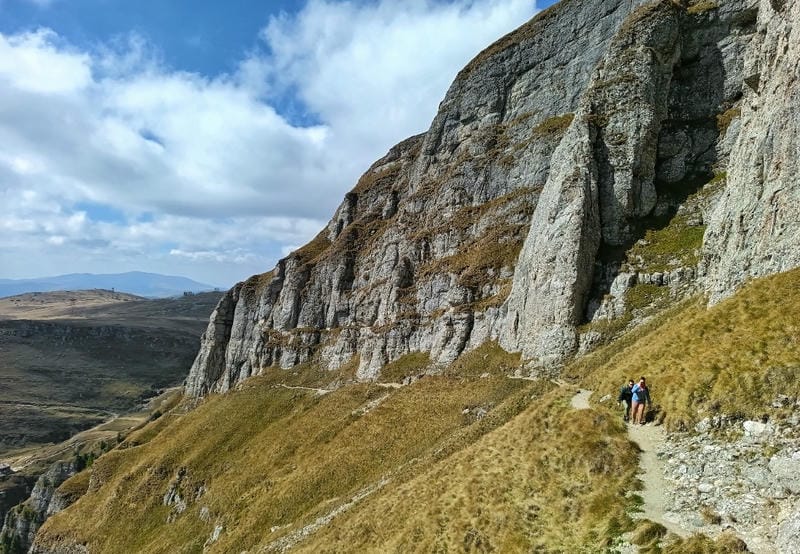
The Carpathian Mountains are a nature lover’s paradise, spreading like a dragon’s spine across Romania’s heartland. This majestic mountain range—with its dense forests, glacial lakes, and sheer peaks—is a perfect backdrop for unforgettable hiking adventures. With numerous national parks, trails, and opportunities for wildlife encounters, the Carpathians cater to hikers of all experience levels.
One of the most popular hiking spots is the Piatra Craiului National Park, known for its distinct limestone ridge and breathtaking views. Intermediate-level hikers often enjoy the trails leading to the Curmătura Hut, where you can rest and enjoy hearty Romanian mountain cuisine. For more seasoned adventurers, scaling Moldoveanu Peak, Romania’s highest at 2,544 meters, in the Făgăraș Mountains, promises both challenge and reward.
The Carpathians are also home to an abundance of wildlife, including bears, wolves, and lynx. Guided eco-tours are available for wildlife enthusiasts, ensuring a safe and informative experience.
Before setting off on your trek, ensure you pack all essential items, including sturdy shoes, water, and layers for the varying temperatures. Trails are well-marked but investing in a trail map or hiring a local guide may enhance your experience, especially on more remote routes. Exploring the Carpathians means discovering a vast, unspoiled wilderness—truly one of Romania’s crown jewels.
8. Explore the Danube Delta
For an entirely different side of Romania, head to the Danube Delta, a UNESCO World Heritage Site and Europe’s second-largest river delta. This natural wonder, formed by the mighty Danube River as it flows into the Black Sea, is a haven for biodiversity and a paradise for bird watchers.
The delta is home to over 300 bird species, including pelicans, herons, egrets, and swans, making it one of Europe’s premier destinations for ornithologists. Visitors can explore this lush ecosystem via boat tours, which run along the delta’s countless waterways and lakes. A guided tour will offer insights into this fragile ecosystem and increase your chances of spotting rare bird species.
Fish are equally abundant, and the Danube Delta is the ideal location for fishing enthusiasts. If you prefer a more serene experience, kayaking tours through the smaller channels offer unparalleled tranquility amidst lush reeds and water lilies.
Eco-tourism accommodations such as traditional fisherman’s cottages or eco-lodges make for an authentic stay. Be sure to sample the local cuisine, particularly dishes such as saramură de pește (grilled fish in brine) or stokfisk (dried fish stew). The Danube Delta offers travelers a distinct connection with nature that’s hard to find elsewhere in Europe.
9. Tour the Painted Monasteries of Bucovina
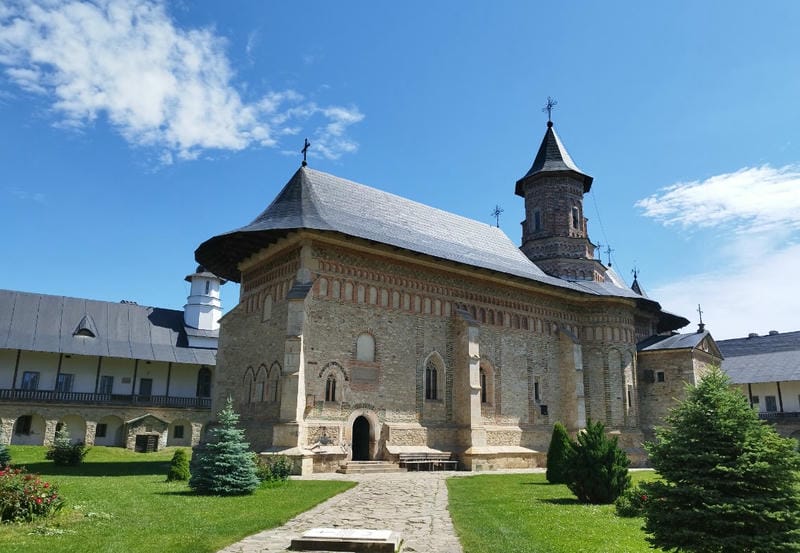
The Painted Monasteries of Bucovina, located in northeastern Romania, are unparalleled cultural and religious landmarks, earning their status as UNESCO World Heritage Sites. Renowned for their vivid, centuries-old frescoes that adorn both the interior and exterior walls, these monasteries serve as a testament to the spiritual and artistic legacy of Romanian Orthodoxy.
Some must-visit monasteries include Voroneț, often called the “Sistine Chapel of the East” due to its striking blue frescoes depicting the Last Judgment, and Humor Monastery, which features charming red-colored frescoes with intricate details. At Moldovița Monastery, visitors can marvel at depictions of the Siege of Constantinople and other biblical and historical scenes rendered in vibrant colors that have stood the test of time.
Visitors interested in art, history, or religion will find the painted monasteries to be not only visually stunning but also deeply meaningful. Tours of the region often include insights into the symbolic meanings of these frescoes and the historical context of these 15th and 16th-century masterpieces. Bucovina’s serene countryside and welcoming locals make the journey to these monasteries even more enchanting.
10. Relax at the Black Sea Coast
Romania’s Black Sea Coast is a perfect destination for sun, sand, and sea. Stretching for nearly 240 kilometers, the coastline is home to both bustling seaside resorts and quieter, more serene beaches.
The popular resort town of Mamaia offers luxurious accommodations, vibrant nightlife, and an array of water sports, including jet-skiing, windsurfing, and parasailing. Known as Romania’s Riviera, Mamaia is a favorite among locals during the summer months thanks to its wide sandy beaches and shallow waters, perfect for families.
If you’re craving a more bohemian vibe, head to Vama Veche, a small village located near the Bulgarian border. Known for its laid-back, alternative lifestyle, Vama Veche is beloved by backpackers and free spirits. During the summer, it becomes a hotspot for outdoor music festivals and impromptu beach parties, offering a more unfiltered, youthful vibe.
For those seeking relaxation, spots like Eforie Nord or Gura Portiței provide quieter beaches and opportunities for spa treatments that utilize Romania’s mineral-rich saltwater and mud. The Black Sea Coast caters to every type of traveler, making it a versatile, must-see destination in Romania.
11. Visit Corvin Castle
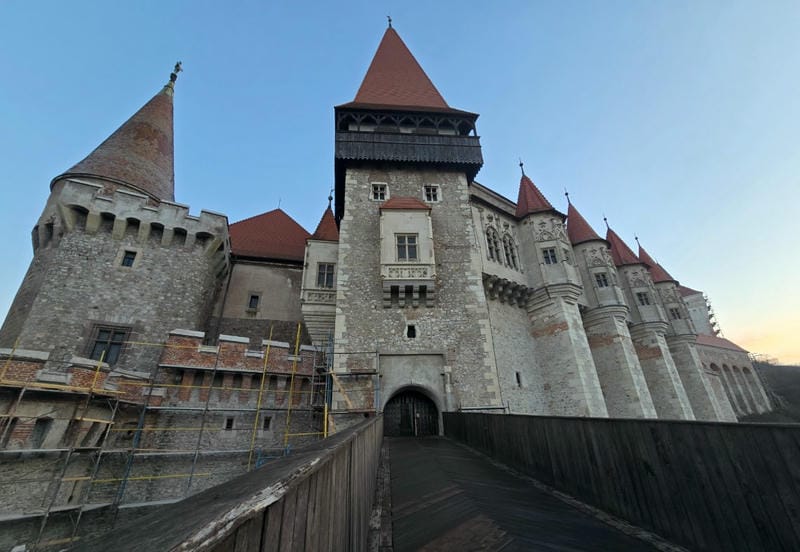
Straight out of a medieval fantasy, Corvin Castle (also known as Hunedoara Castle) is one of Europe’s largest and most beautiful Gothic castles. With its imposing towers, drawbridge, and interior halls steeped in history, this 14th-century fortress is a magnet for history lovers, photographers, and fans of medieval lore.
As you wander through the castle’s stone corridors and halls, you’ll discover well-preserved rooms, including the Knight’s Hall and the basement torture chamber that gives a chilling glimpse into the past. Perhaps more famously, Corvin Castle is surrounded by legends of Vlad the Impaler, who was supposedly imprisoned here for seven years—adding to its mystique as a “haunted” destination.
The castle hosts reenactments, festivals, and events, such as the White Night of the Castle, which features period music, costumes, and theatrical performances. Whether or not you’re lured in by the haunted tales, the sheer architectural beauty and historical significance of Corvin Castle make it an unmissable stop on your Romanian itinerary.
12. Experience Traditional Romanian Villages
For an authentic glimpse of Romanian heritage, spend time exploring the traditional villages of Maramureș and Bucovina, where time seems to stand still. Rural Romania is characterized by wooden churches, haystacks, colorful folk costumes, and warm hospitality.
In Maramureș, the villages of Ieud, Breb, and Bârsana are particularly enchanting, with their intricately carved wooden gates and UNESCO-protected wooden churches. Locals often maintain traditions like weaving, butter churning, and winemaking, which you can witness or even participate in. Don’t miss tasting horincă, a potent fruit brandy unique to the region.
Bucovina offers a more spiritual experience, with its traditional painted monasteries nestled amidst rolling hills. Visit the quaint rural homes here to admire their vibrant, hand-painted exteriors and explore the surrounding countryside for a serene respite from bustling tourist hotspots.
The charm of these villages lies in their simplicity and authenticity, offering visitors a chance to connect with Romania’s roots through immersive cultural experiences.
13. Explore Turda Salt Mine
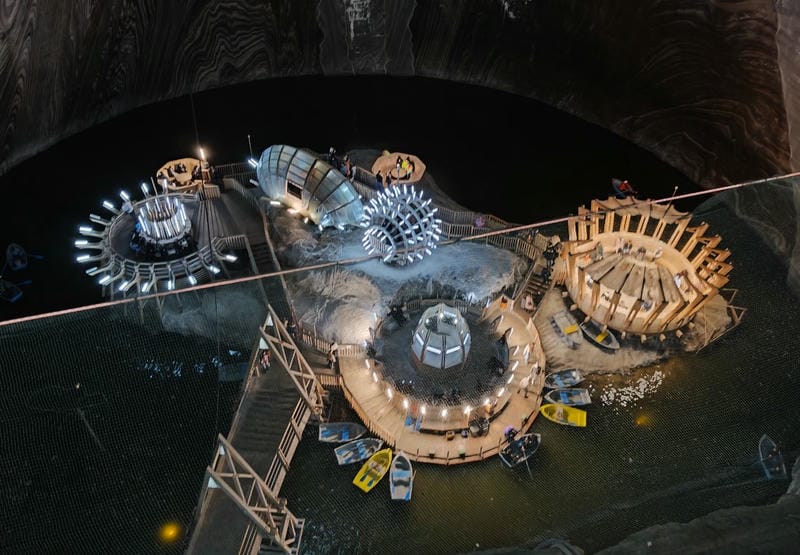
Deep beneath the surface of Cluj County lies the Salina Turda, an extraordinary salt mine turned tourist attraction. Dating back to Roman times, the mine has been transformed into a subterranean wonderland that makes you feel like you’ve stepped into a science fiction movie.
Visitors descend into the mine via elevator (or stairs for the adventurous) to explore its enormous caverns, some of which are illuminated by surreal, glowing lights. Highlights include a mini-amusement park complete with a Ferris wheel, a subterranean lake where you can row boats, and an underground amphitheater that hosts concerts and events.
The mine also has a health spa, as the air is rich in salt and believed to have therapeutic properties, particularly for respiratory ailments. The Rudolf Mine Hall, which features a collection of mining tools and equipment, offers a glimpse into the salt mine’s industrial past.
A unique blend of history, science, and recreation, Salina Turda should be at the top of your Romanian bucket list.
14. Discover Cluj-Napoca
Known as the unofficial capital of Transylvania, Cluj-Napoca is a vibrant city filled with art, history, and youthful energy. Home to some of Romania’s most prestigious universities, Cluj has a dynamic cultural scene that blends ancient traditions with modern innovation.
Don’t miss Unirii Square, the city’s historical center, lined with imposing Gothic and Baroque buildings. The square’s iconic landmark, the St. Michael’s Church, is one of Romania’s finest examples of Gothic architecture.
For a modern artistic vibe, head to the Fabrica de Pensule, a contemporary arts hub where world-class galleries and performance spaces reflect Cluj’s growing reputation as an artistic powerhouse. If you’re visiting in June, attend the Transylvania International Film Festival (TIFF), one of Eastern Europe’s most celebrated film festivals.
With a lively nightlife scene and a mix of history and innovation, Cluj-Napoca is ideal for the adventurous traveler.
15. Visit Timișoara: Romania’s ‘Little Vienna’
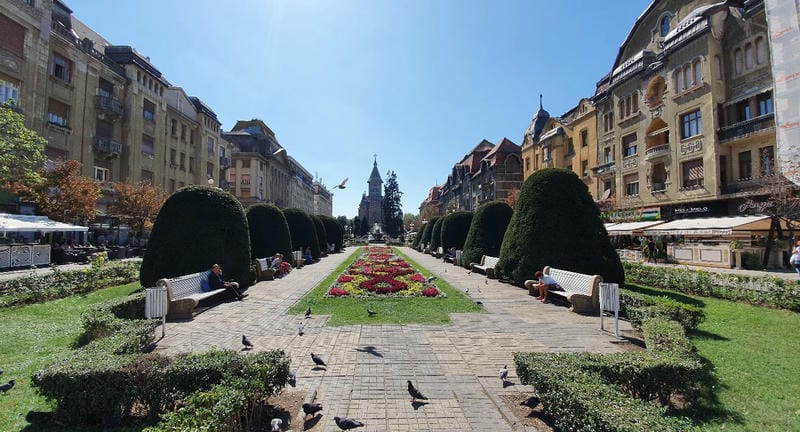
Nicknamed “Little Vienna” due to its rich architectural heritage and vibrant cultural life, Timișoara is a city that played a pivotal role in Romania’s modern history. Located in western Romania near the Hungarian and Serbian borders, Timișoara is known as the birthplace of the 1989 Romanian Revolution, which sparked the fall of communism.
Start your exploration at Victory Square (Piața Victoriei), where walking among art nouveau and Secession-style buildings will truly transport you to another era. At one end of the square sits the majestic Orthodox Metropolitan Cathedral, an iconic landmark with its distinctive Romanian Byzantine style.
Continue to Union Square (Piața Unirii), one of the most beautiful squares in Timișoara, surrounded by brightly painted Baroque buildings, charming cafes, and ornate churches like the Roman Catholic Dome. This spot is particularly enchanting in the summer months when it blooms with outdoor terraces and lush greenery.
Timișoara is a cultural melting pot, hosting a variety of festivals throughout the year, including the Jazz Festival, the Opera Festival, and many outdoor concerts. As a 2023 European Capital of Culture, its status as one of Romania’s most creative cities continues to grow.
Whether it’s the beautifully restored architecture, the historical significance, or the lively events, Timișoara is the kind of city where the past and the future seamlessly intertwine.
16. Enjoy Nature in Retezat National Park
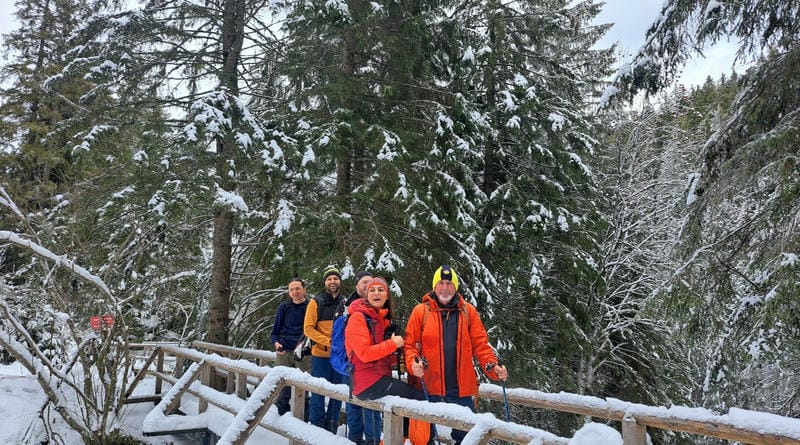
An adventurer’s dream destination, Retezat National Park is one of Romania’s natural wonders. This protected area in the Southern Carpathians is known for its rugged peaks, pristine lakes, and over 1,200 species of plants, making it one of Europe’s last untouched wildernesses.
The park is a hiker’s paradise, with trails of varying difficulty levels. A popular route is the hike to Bucura Lake, the largest glacial lake in Romania. Surrounded by jagged mountain ridges and emerald-green pastures, its tranquil waters provide a breathtaking camping site for those seeking to immerse themselves in nature.
Wildlife enthusiasts have the chance to spot rare species such as chamois, lynx, and even the elusive brown bear. Bird watchers can enjoy sightings of golden eagles and capercaillies, among other birds native to the region.
The tranquility of Retezat National Park is perfect for disconnecting from the fast pace of modern life and reconnecting with the great outdoors. Whether you’re climbing peaks, fishing in crystal-clear rivers, or simply absorbing the fresh mountain air, Retezat is a must for nature lovers visiting Romania.
17. Experience Romanian Wine Tours
Romania’s wine tradition spans over 2,000 years, making it one of the oldest wine-producing regions in Europe. Today, the country has a burgeoning wine tourism industry, offering visitors the chance to tour scenic vineyards and sample exceptional, locally produced wines.
Some of the most famous wine regions include the Dealu Mare region, located south of the Carpathians, which is often called Romania’s “Tuscany” due to its rolling hills and high-quality red wines. Here, wineries like Lacerta Winery and Budureasca offer tastings paired with exceptional Romanian gastronomy.
Heading east, the Murfatlar region near the Black Sea is known for its sunny climate and aromatic white wines, while the historic Moldavian wine region, including estates like Cricova and Cotnari, is famous for sweet, dessert-worthy varieties.
Beyond indulging in fine wine and local delicacies, wine tours often include walks through vineyards, lessons on Romanian winemaking traditions, and even insights into historic wine cellars. Whether you’re a casual wine drinker or a connoisseur, Romania’s hidden wine scene holds surprises for every palate.
18. Visit the Merry Cemetery in Săpânța
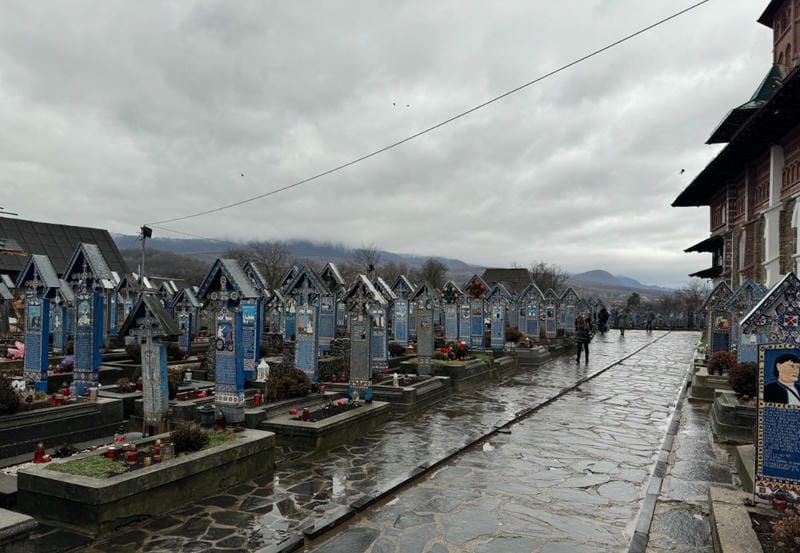
Tucked away in the Maramureș region, the Merry Cemetery in Săpânța is unlike any other burial ground in the world. Far from being somber or somnolent, this UNESCO World Heritage Site is known for its colorful wooden crosses adorned with cheerful epitaphs and playful illustrations reflecting the life—or even the quirks—of the deceased.
Each tombstone is hand-carved and painted by local artisans following a tradition started by the cemetery’s original woodcarver, Stan Ioan Pătraș, in 1935. Instead of focusing on death, the inscriptions often depict humorous or ironic stories about the individual’s life, accomplishments, or even misadventures. For instance, one epitaph might jest about poor driving skills or someone’s love for a particularly strong drink.
The cemetery also serves as a peek into Romanian village life and culture, celebrating individuality and embracing life’s cycle with humor and color. A visit to the Merry Cemetery will leave you reflecting on life, mortality, and the joy of finding laughter in even the most serious moments.
19. Explore Iași’s Cultural Heritage
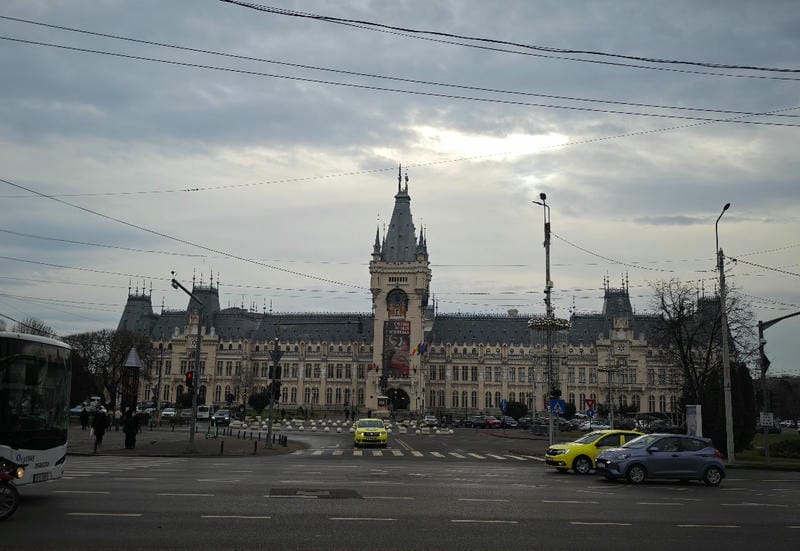
Known as the cultural capital of Romania, the city of Iași lies in the northeastern region of the country and boasts a rich history as one of Romania’s oldest cities. Often overlooked by tourists, Iași reveals itself as an intellectual and artistic hub, home to ornate churches, museums, theaters, and one of the country’s most prestigious universities.
Start your visit at the Palace of Culture, a Neo-Gothic masterpiece with 365 separate rooms. Inside, you’ll find four fascinating museums, including the Museum of Art and the Ethnographic Museum, making this palace a must-see for history and art lovers alike.
Another highlight is the Church of the Three Hierarchs with its intricate stone carvings and Byzantine roots, and the Metropolitan Cathedral, one of the largest Eastern Orthodox cathedrals in Romania.
Iași is also known for its literary heritage, with landmarks like the Central University Library, which houses the majestic Pinacoteca reading room, and the city’s dedication to renowned poets like Mihai Eminescu. Whether you’re strolling along the bustling Copou Garden or attending classical music concerts at the Vasile Alecsandri National Theatre, Iași is a city that resonates with deep cultural significance.
20. Discover Oradea’s Art Nouveau Architecture
Situated near the Hungarian border, Oradea is a hidden architectural gem of Romania, celebrated for its stunning Art Nouveau buildings. Known as one of the most beautiful cities in western Romania, Oradea’s blend of elegant urban charm and relaxed ambiance makes it an ideal destination for architecture aficionados.
The city’s Union Square (Piața Unirii) is the focal point of Oradea’s architectural beauty, surrounded by notable landmarks like the Black Eagle Palace, an exquisite Art Nouveau arcade known for its stained glasswork and intricate details. Stroll along the nearby streets, and you’ll find other masterpieces such as the Moskovits Palace, a historical apartment building, and the Moon Church, featuring a mechanism that displays the phases of the moon.
Oradea has a laid-back, atmospheric allure, and with its café terraces, parks, and cycling-friendly layout, it’s perfect for those seeking a more serene exploration of Romania’s cosmopolitan side.
21. Adventure in Vama Veche
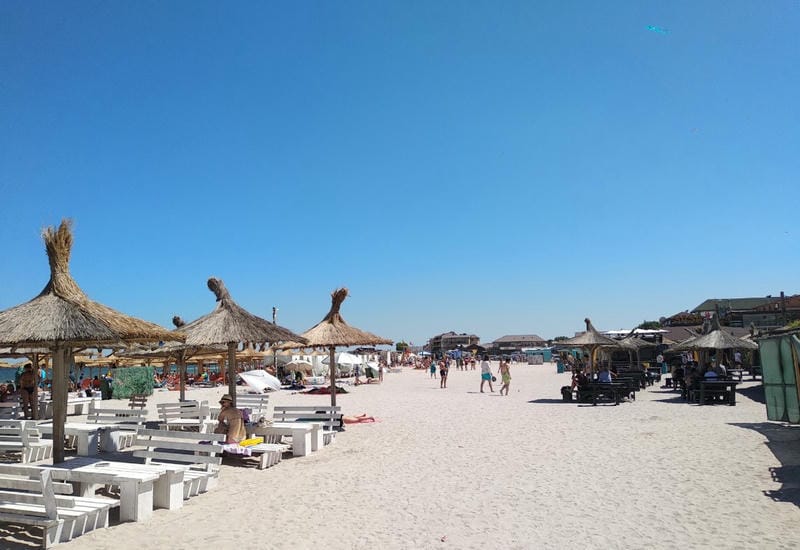
Ready for a bohemian beach paradise? Look no further than Vama Veche, one of Romania’s most unique coastal destinations. Nestled on the Black Sea and just a few kilometers from the Bulgarian border, Vama Veche is famous for its alternative culture, freewheeling spirit, and lively summer vibe.
Here, you’ll uncover a beach destination unlike any other in Romania. During the day, it’s all about sunbathing or engaging in water activities like paddleboarding or snorkeling. By night, live music, impromptu beach bonfires, and vibrant nightlife take over, creating a festival-like atmosphere every summer evening.
A getaway to Vama Veche promises a relaxed, uninhibited ambiance where locals, artists, and free spirits gather. While Vama Veche is quieter in the off-season, it still retains its hippie charm. If you’re looking for something off the beaten path, this seaside village will provide a memorable adventure.
FAQs Section
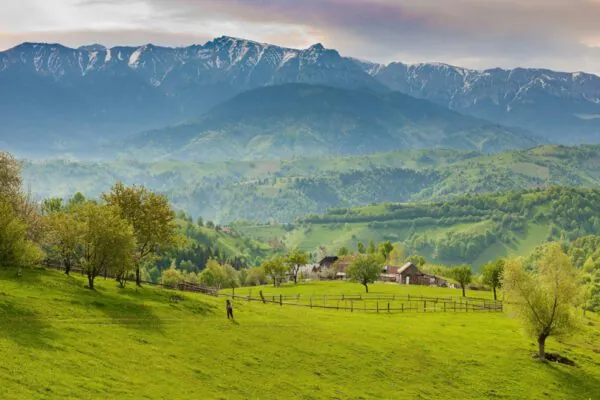
1. What is the best time to visit Romania?
The best time to visit is from late spring (May) to early autumn (September), when the weather is mild, and outdoor activities are most accessible. Summer is ideal for beaches, while late autumn offers vibrant fall foliage in the Carpathians.
2. How do I get around Romania?
Trains connect most major cities, while buses cover shorter routes. Renting a car is the best option for exploring rural and remote areas.
3. Is Romania safe for tourists?
Yes, Romania is generally safe for travelers. As always, use caution with personal items in crowded areas, and stick to well-marked trails in nature.
4. What currency is used in Romania?
The official currency is the Romanian leu (RON). Credit cards are widely accepted in cities, but carry cash for rural areas.
5. What are some traditional Romanian dishes to try?
Try sarmale (cabbage rolls), mămăligă (polenta), mititei (grilled sausages), and papanași (a type of fried doughnut). Pair meals with plum brandy (țuică) for an authentic experience.
Conclusion
Romania is a destination that captivates each traveler with its stunning array of attractions—from medieval towns and mysterious castles to untouched landscapes and welcoming villages. By delving beyond tourist clichés, you uncover a richly diverse country brimming with hidden gems. Whether it’s your first visit or your fifth, Romania never ceases to enchant with its history, natural beauty, and cultural depths. Your next unforgettable adventure awaits in this extraordinary corner of Europe.
